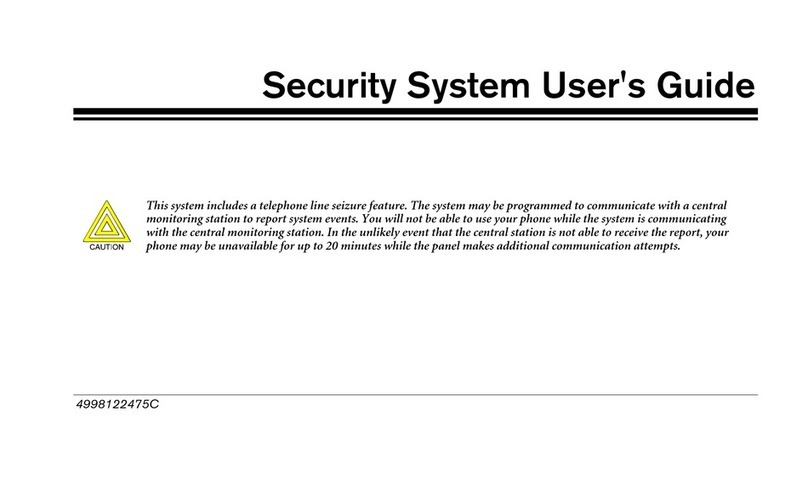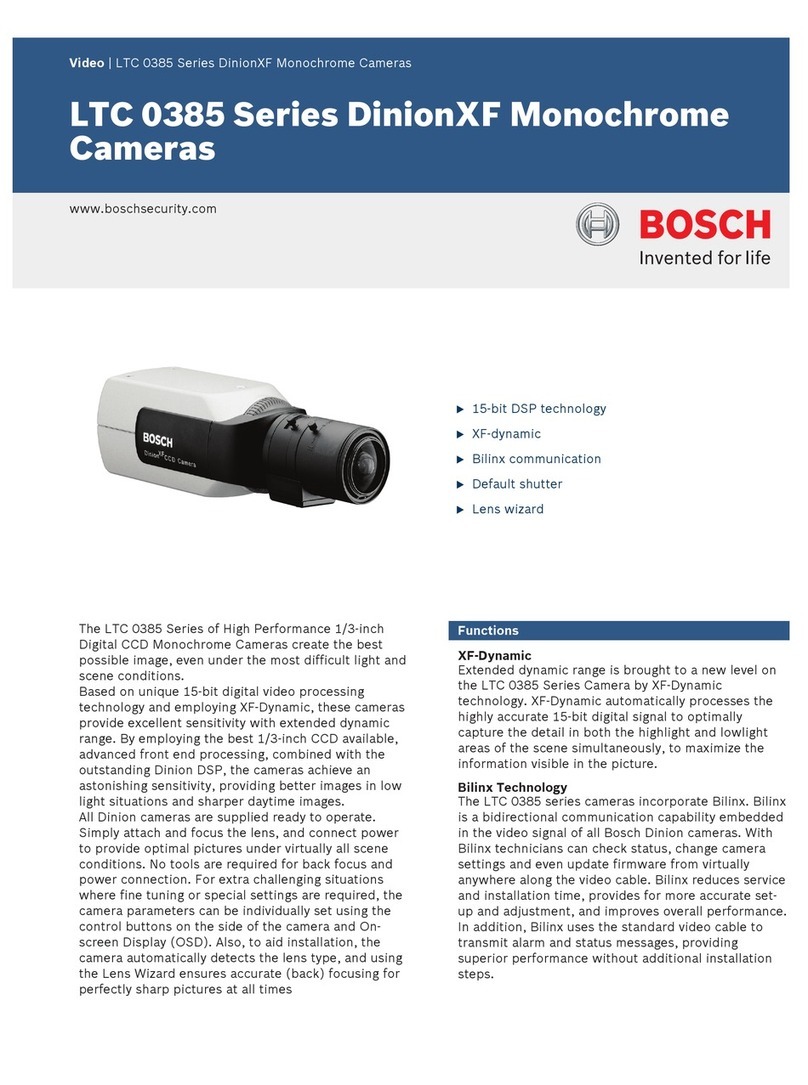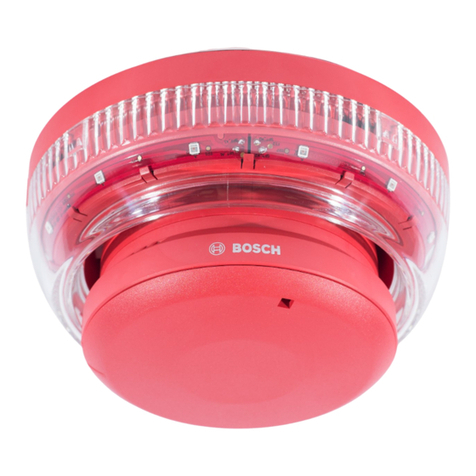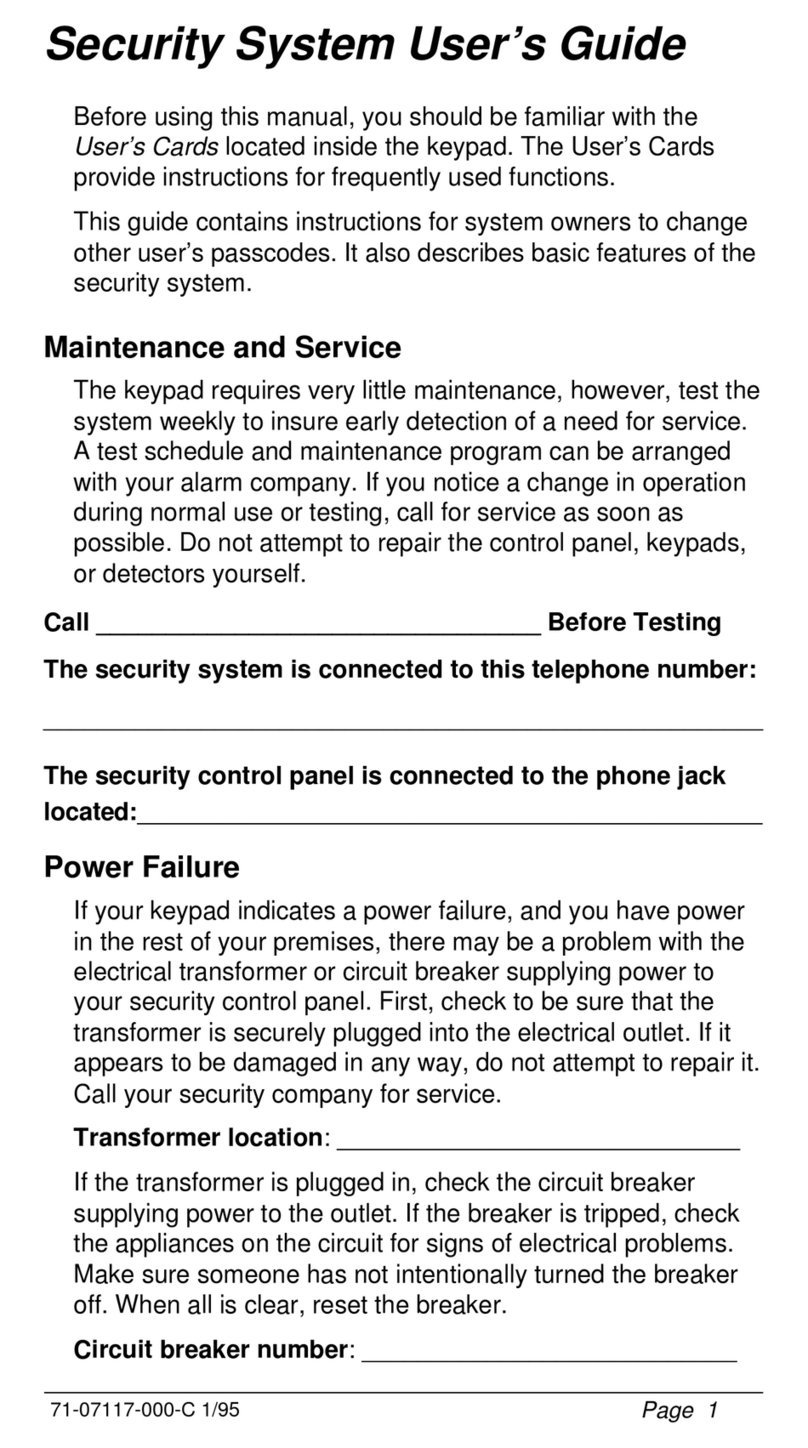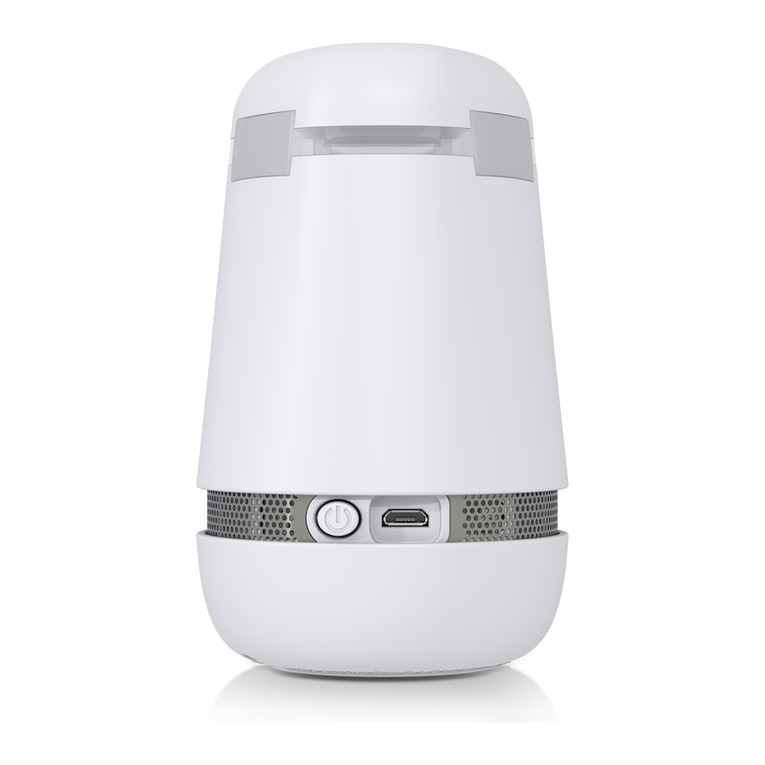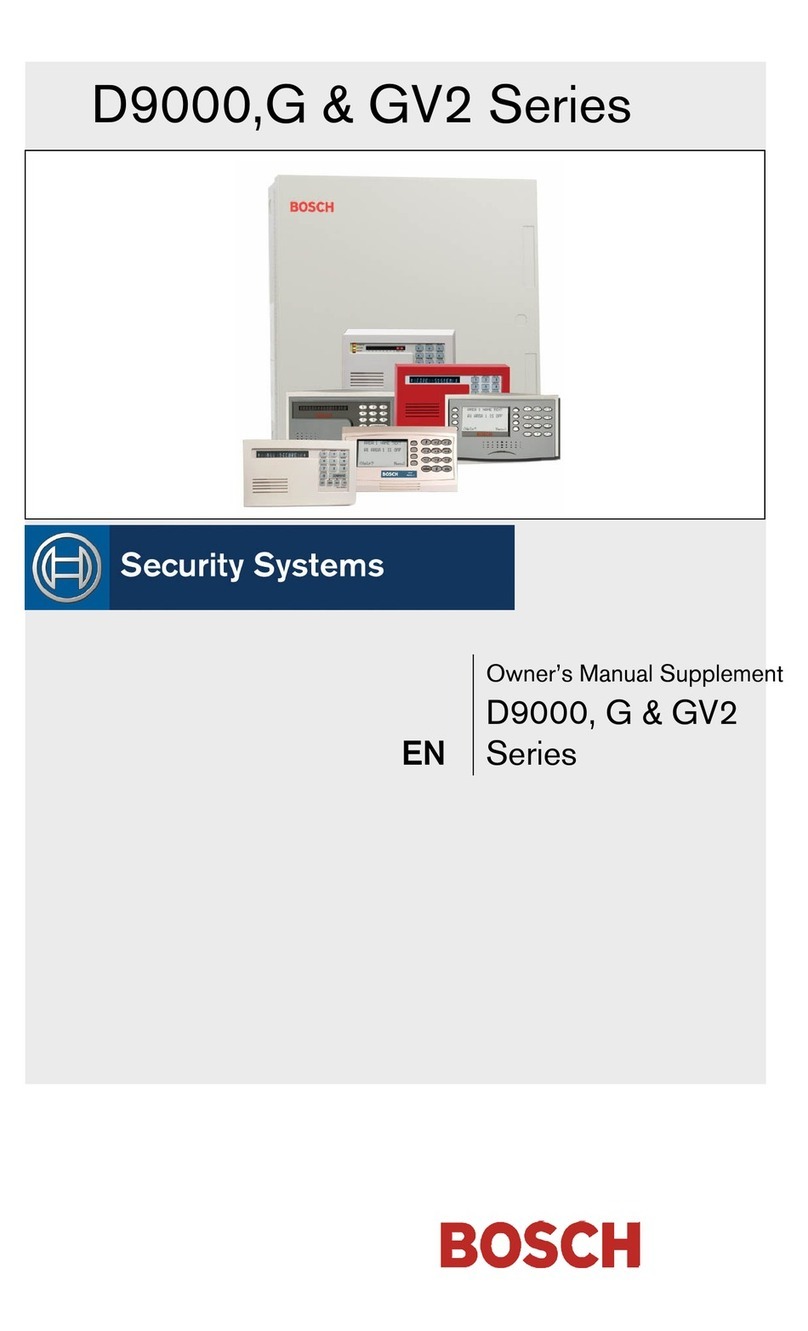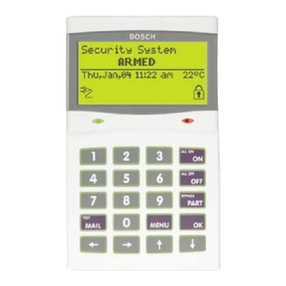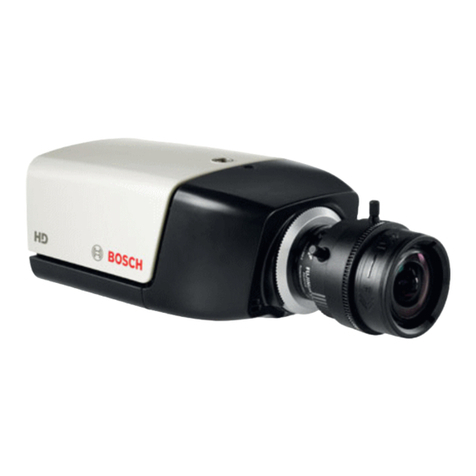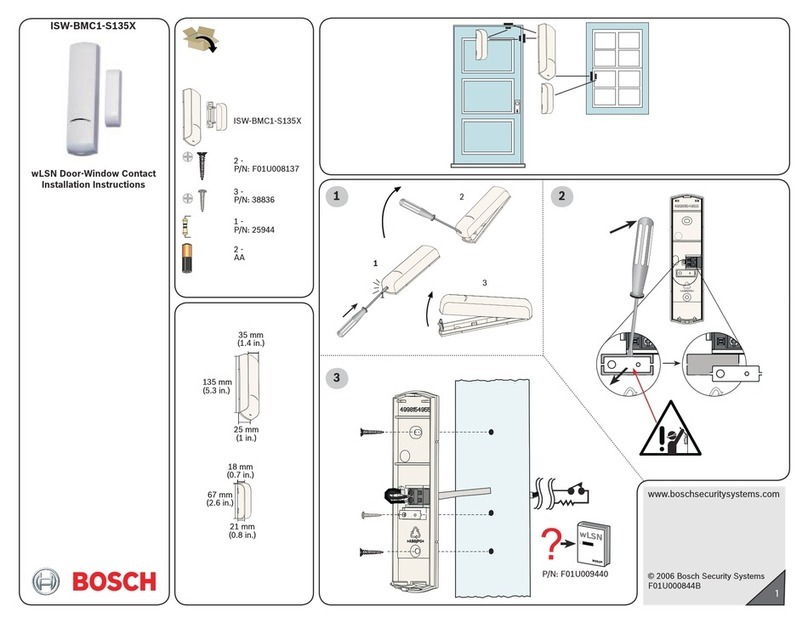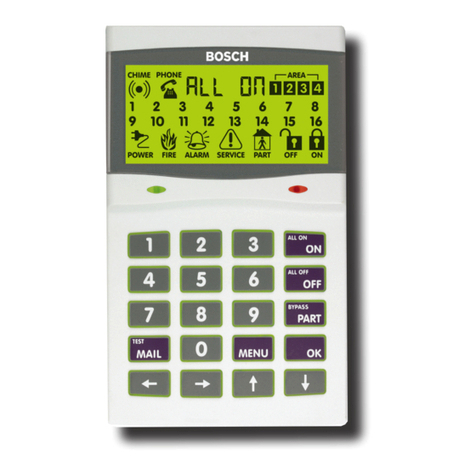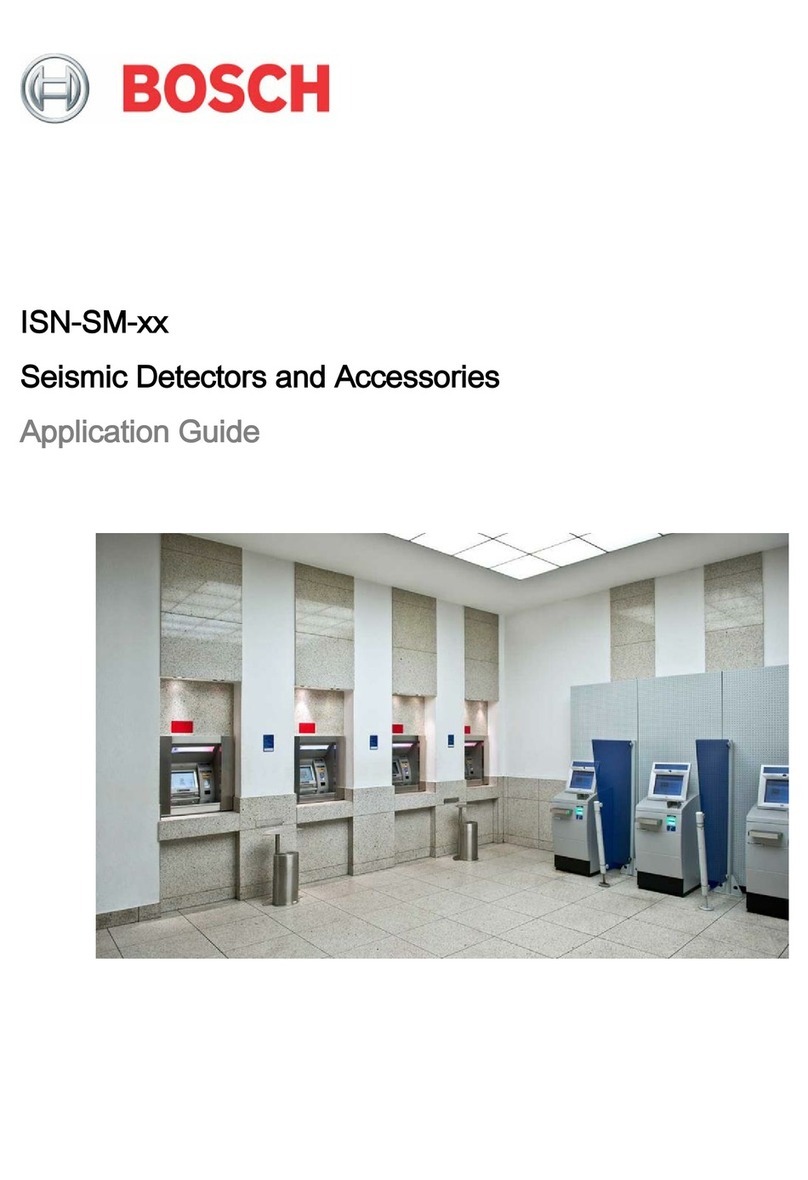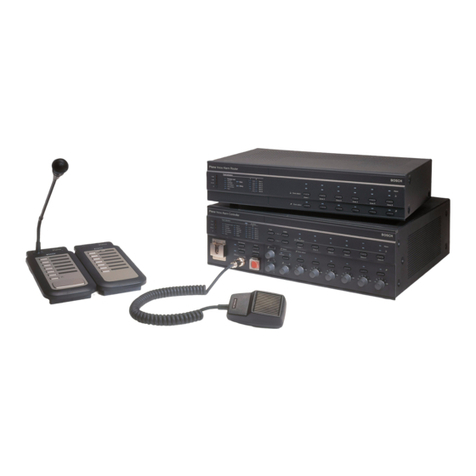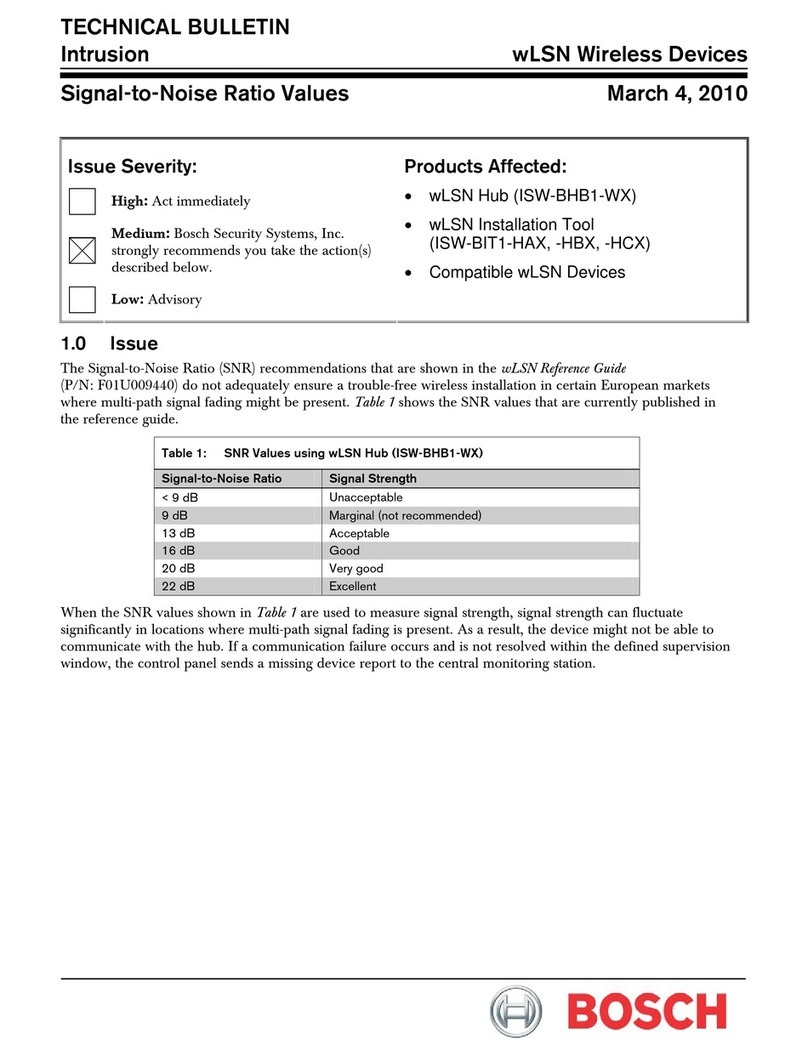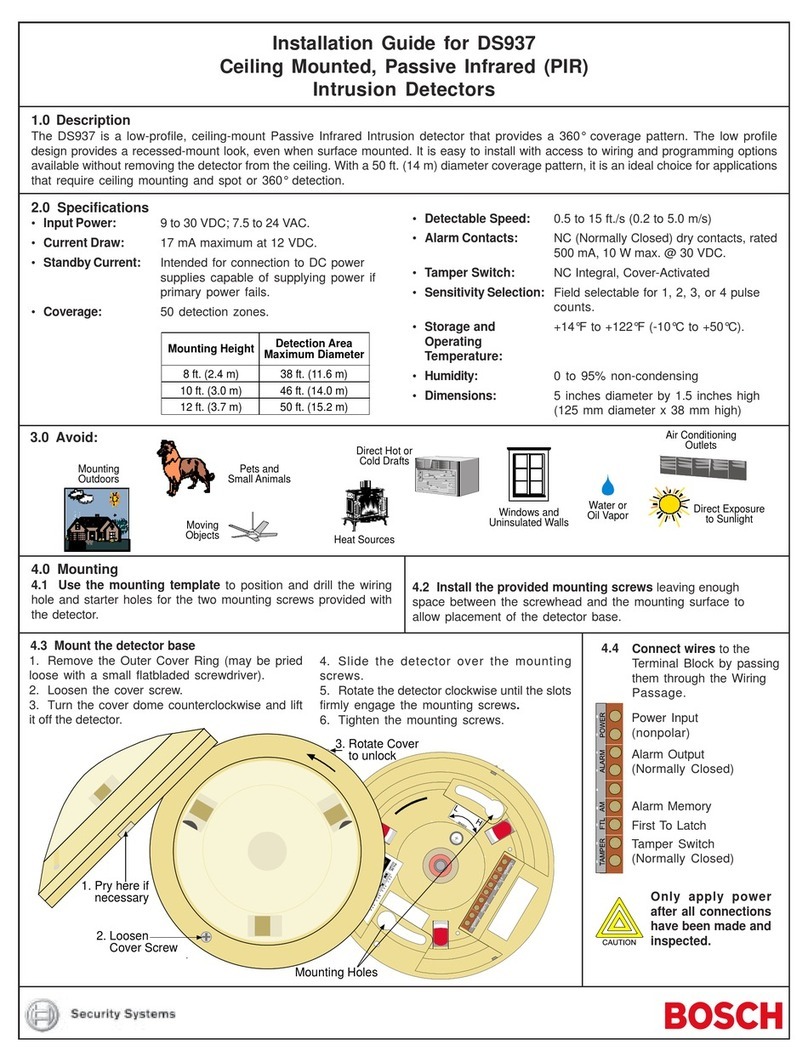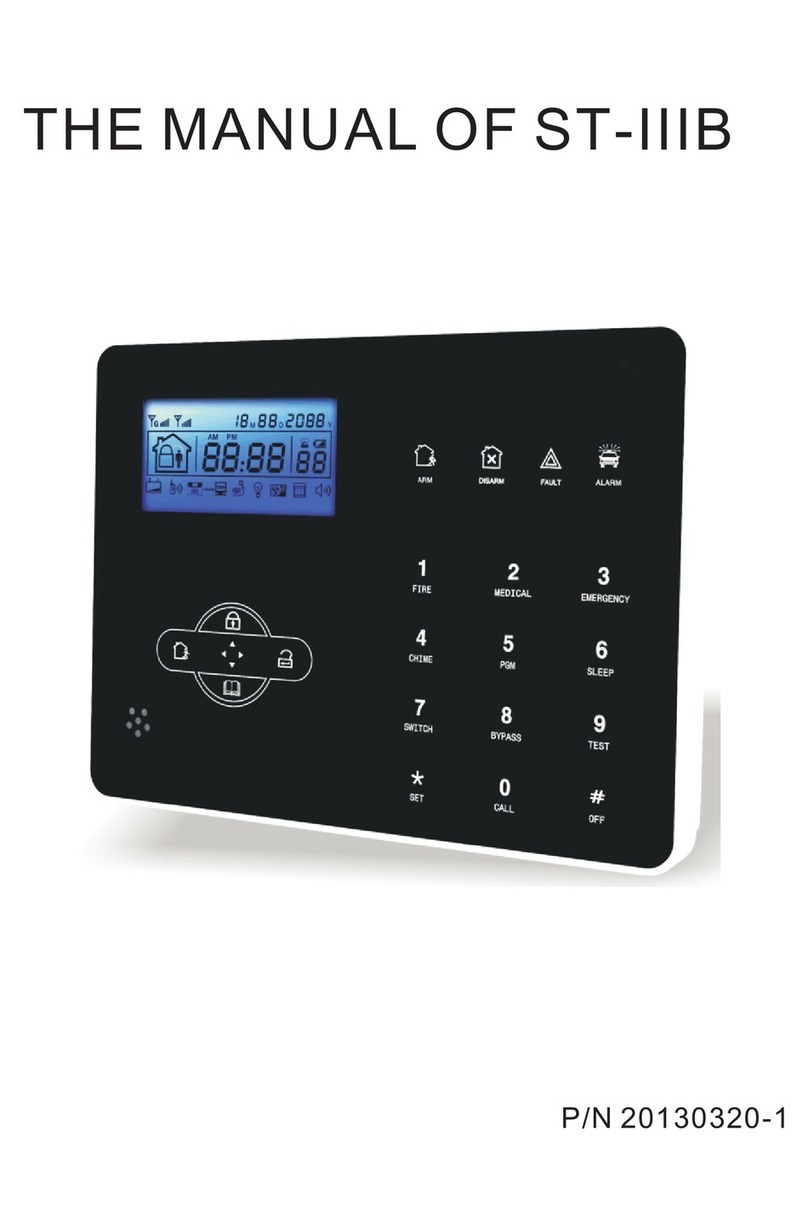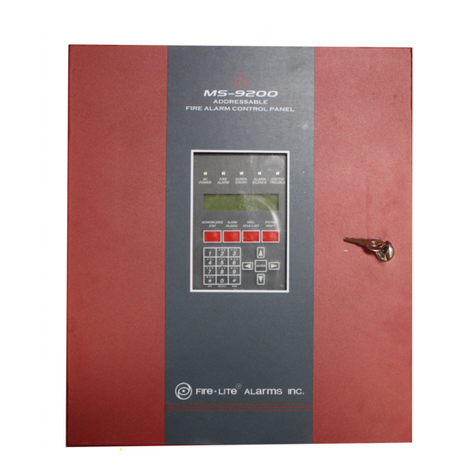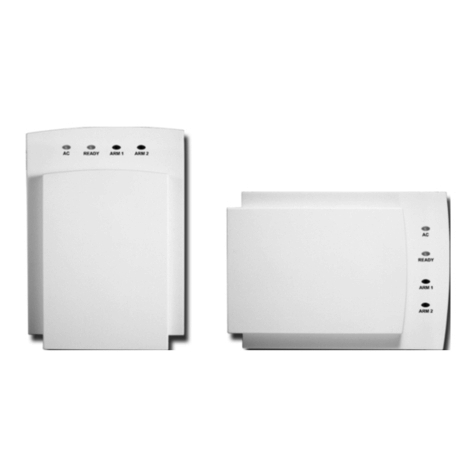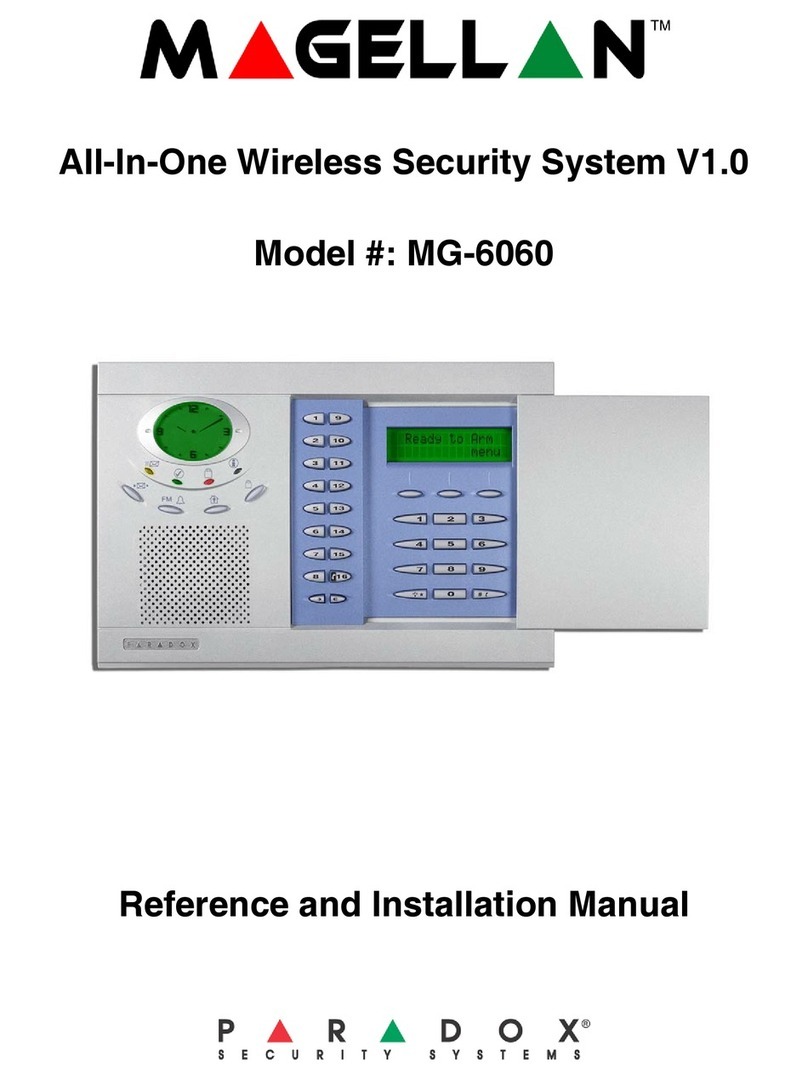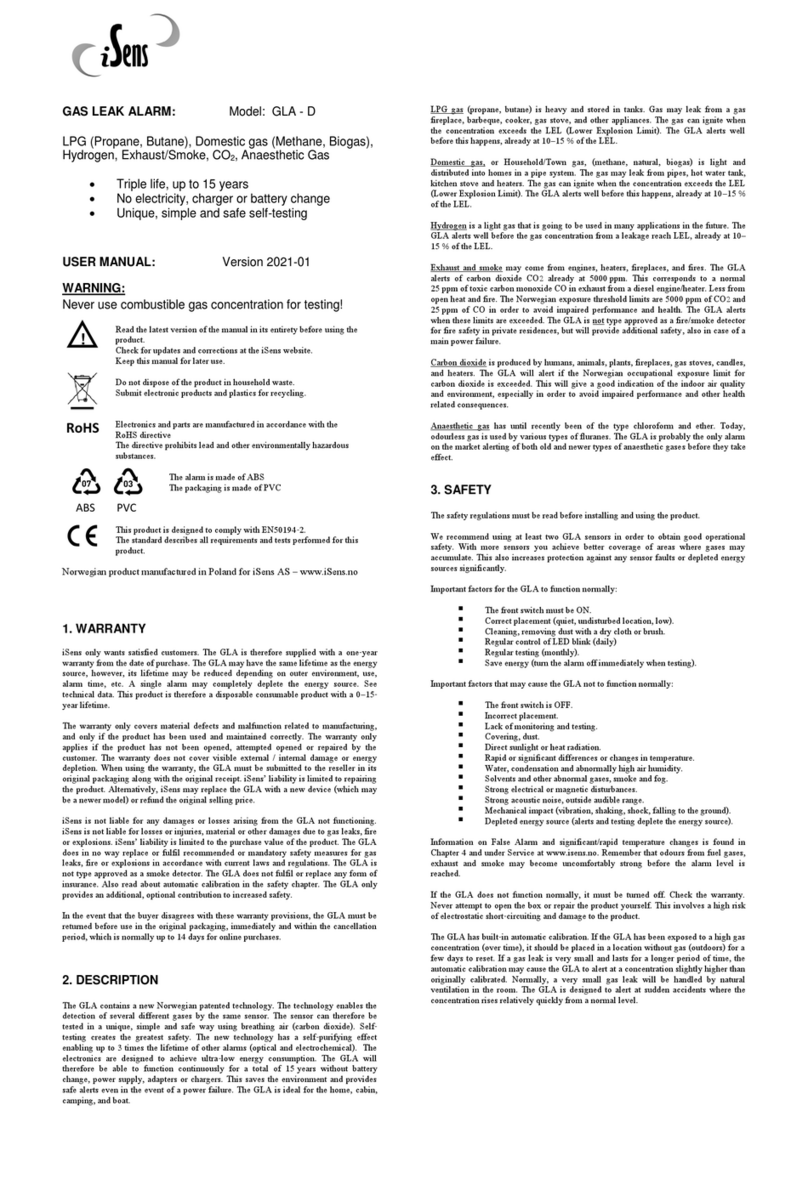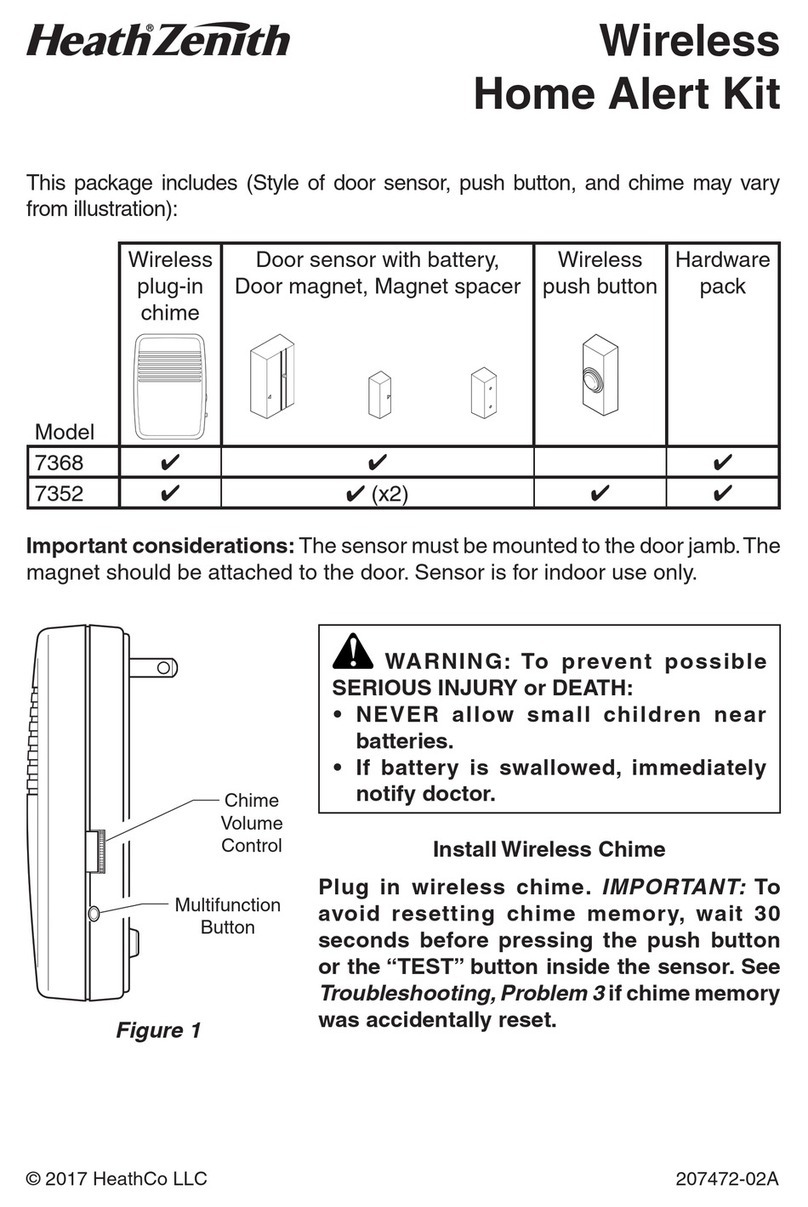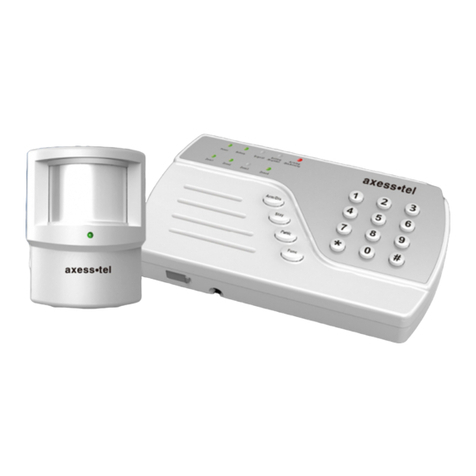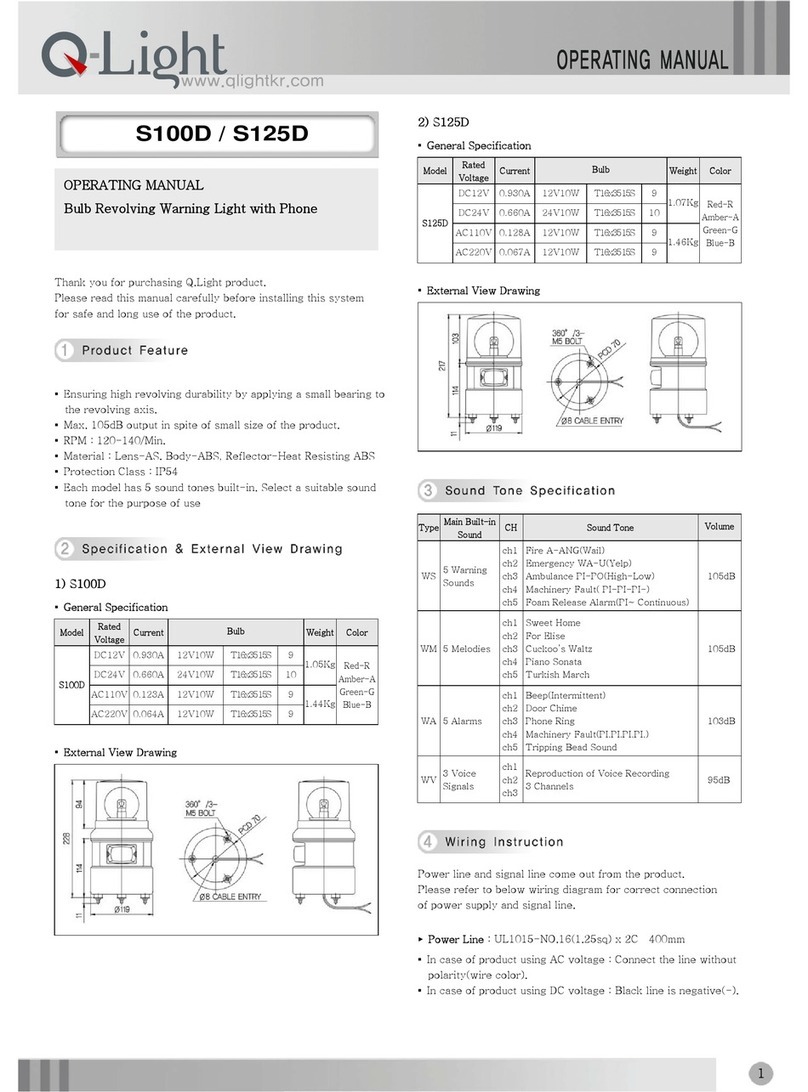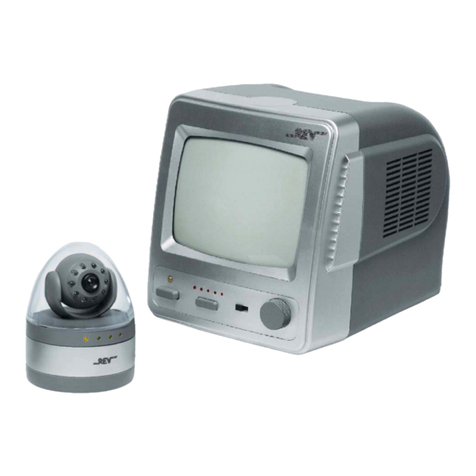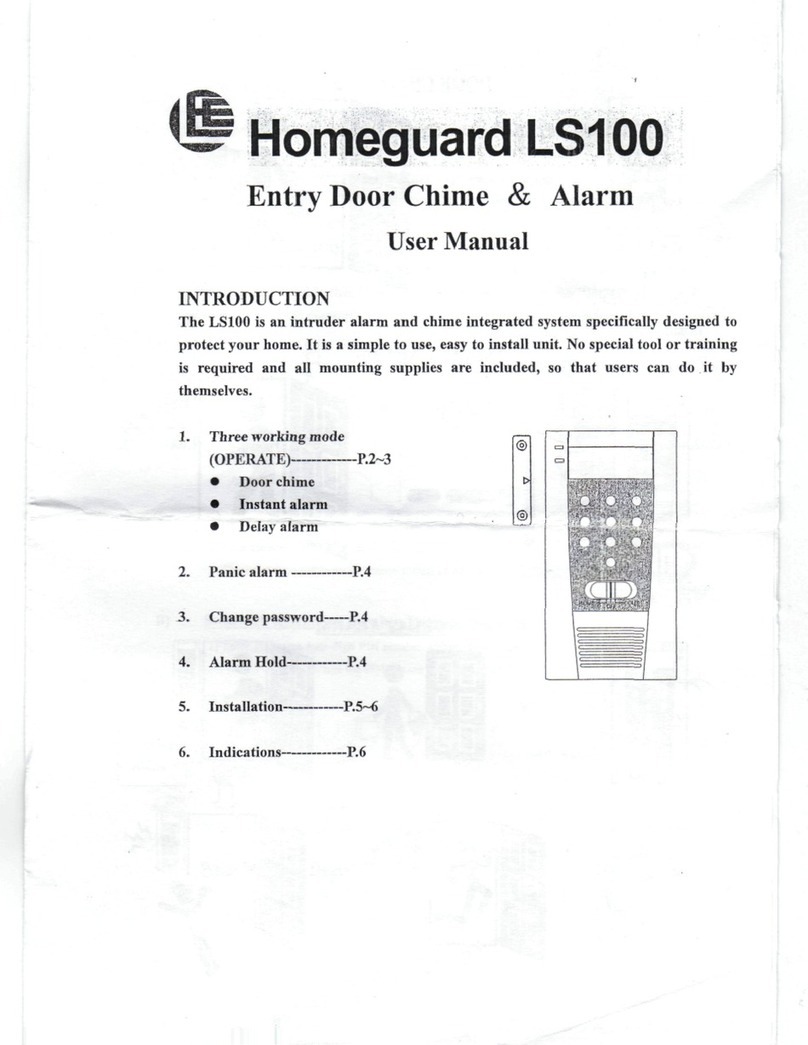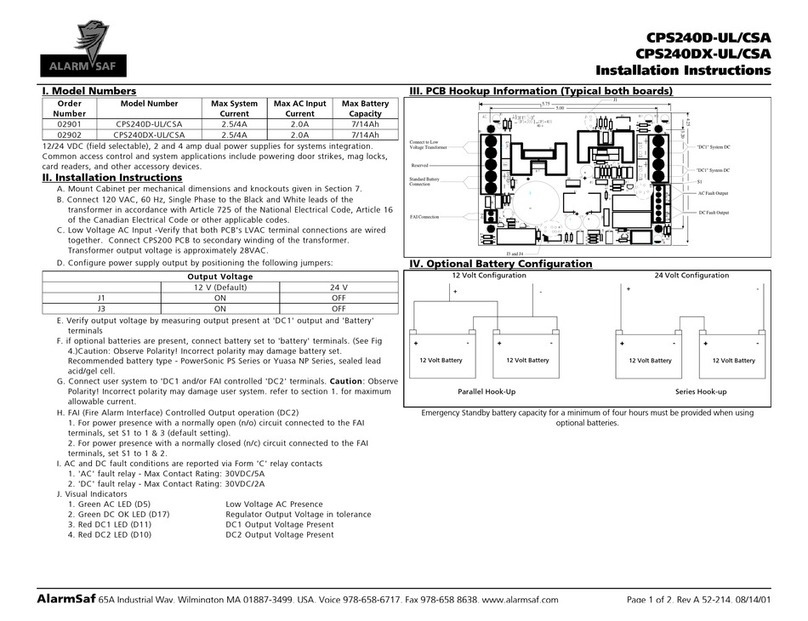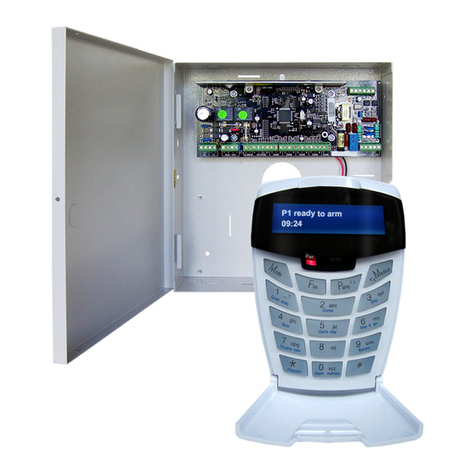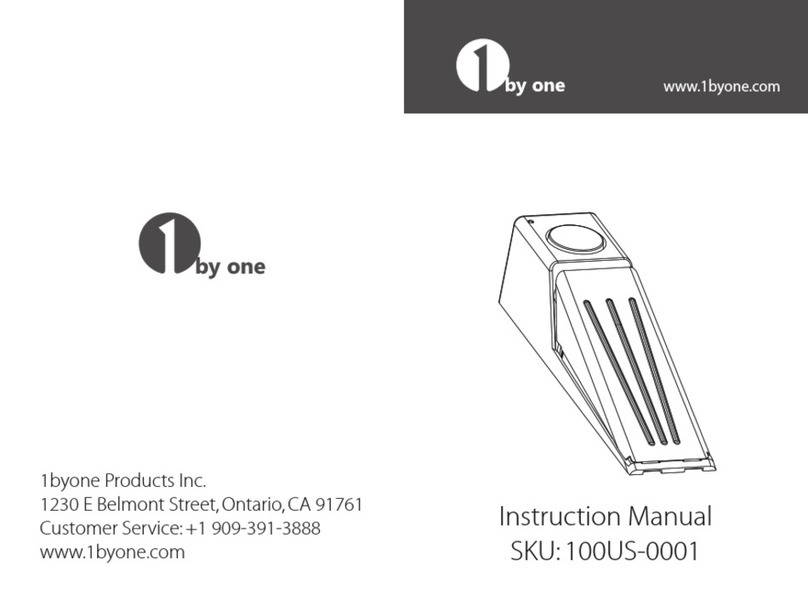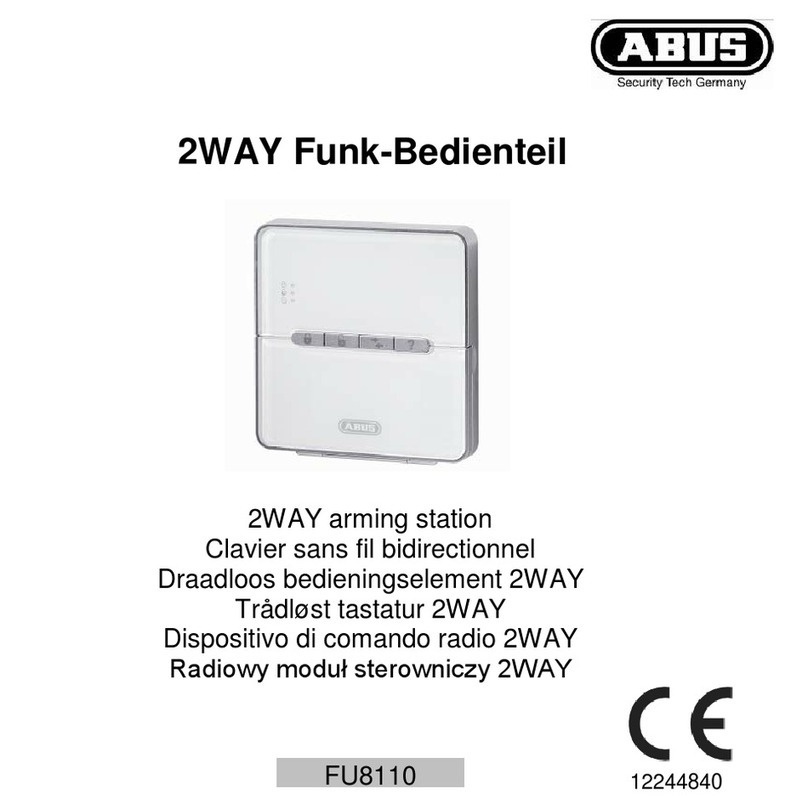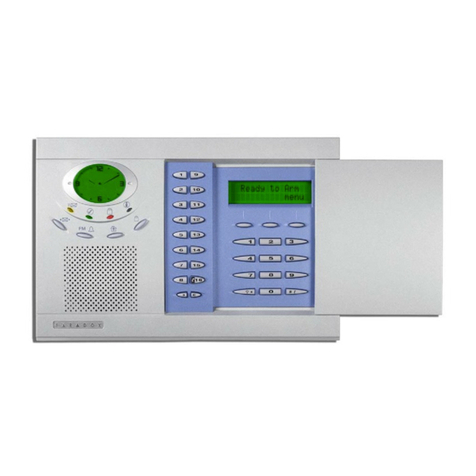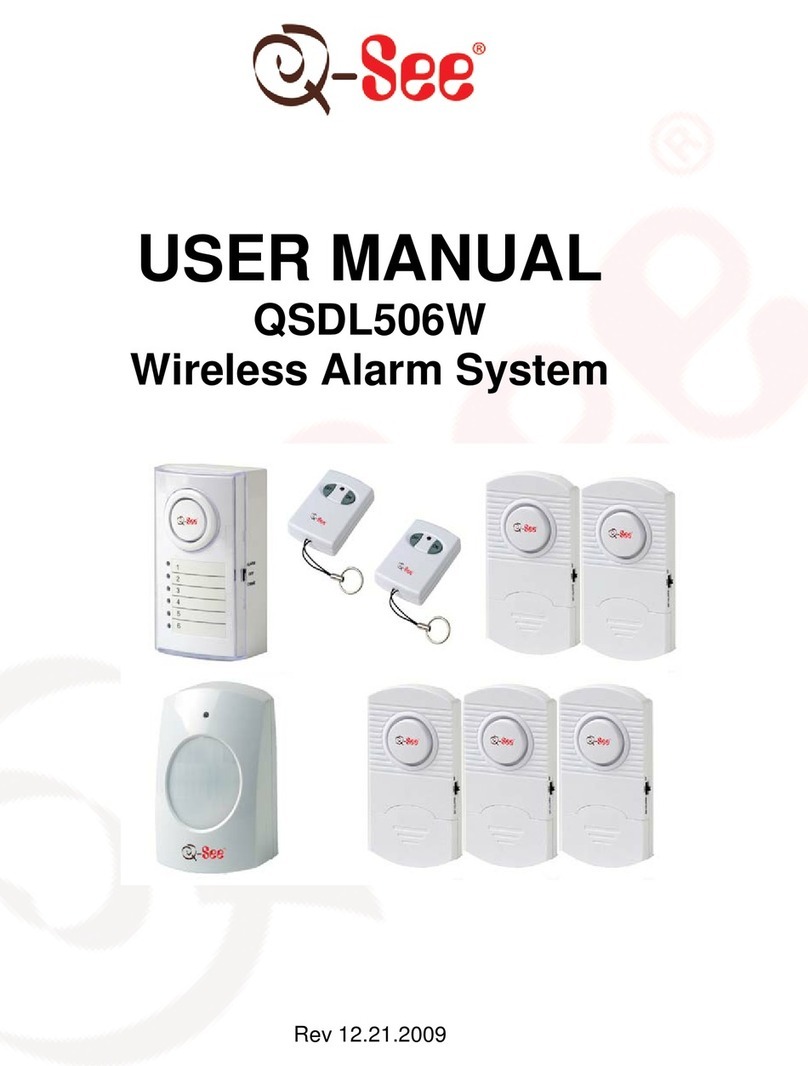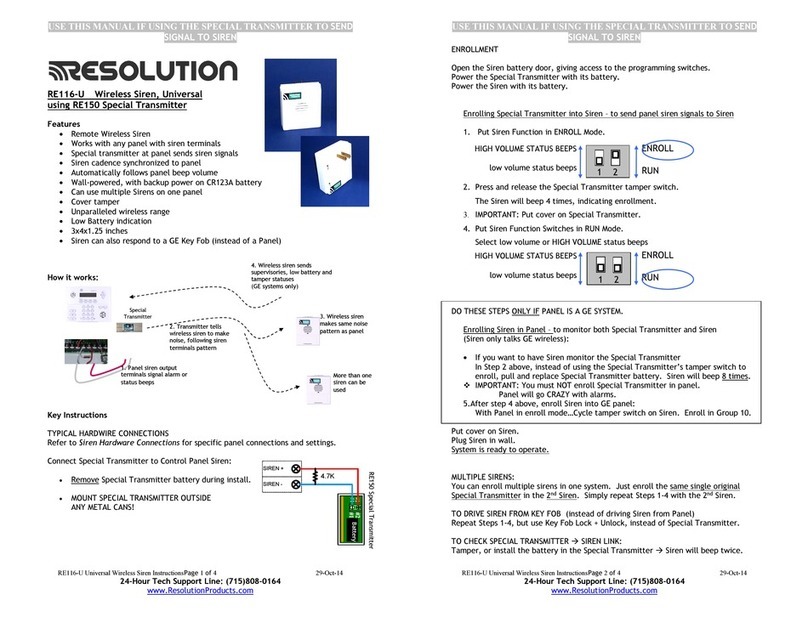
8
Keypad Tones
Your keypad emits several distinct tones and flashes keypad lights to
alert you to system events.Additional bells or sirens may also be
connected to your system. Bells or sirens mounted on the exterior of
your premises alert neighbors to emergencies and provide an audible
guide for police and fire fighters.
1. Fire Alarm Tone: When a fire point activates,the keypad
repeatedly emits a warble tone that is on for 1 sec., then briefly
off.
2. Burglary Alarm Tone: When a burglary point activates while
your system is turned on, your keypad emits a continuous
warble tone.The tone sounds for the time set by your security
company.
3. Trouble Tone: When a system component is not functioning
properly,your keypad repeatedly emits a warble tone that is on
briefly, followed by a pause,followed by the warble tone.If the
problem is with a point,the system display indicates which point
is faulted.
4. Keypress Tone: Pressing any key on the keypad sounds a short
pip,indicating that the entry is accepted.
5. Entry Delay Tone: When you enter the premises through a point
programmed for entry delay,the keypad emits a repeating short
beep,long beep tone to remind you to turn off your system.If
the system is not turned off before the entry delay expires, an
alarm report may be sent to your alarm company.
6. Exit Delay Tone: After you turn your system on,the keypad
emits an intermittent beep tone and counts down the exit delay
time. If you do not exit before the delay time expires, and an exit
delay door is faulted, an alarm occurs.
7. Error Tone: If you press an incorrect key, your keypad emits an
error tone to indicate an invalid entry.The error tone is the same
warble tone as the trouble tone,but it is not repeated.
8. OK Tone: Indicates that a keypad entry is accepted; for example,
that a correct passcode was entered.The keypad emits a single,
high-pitched beep tone for 1 second.
9. Watch Tone: The keypad emits a tone to alert you when any
watched point is faulted.The tone varies in duration, depending
upon the watch tone selected (see Selecting Watch Tone on page
19).






















